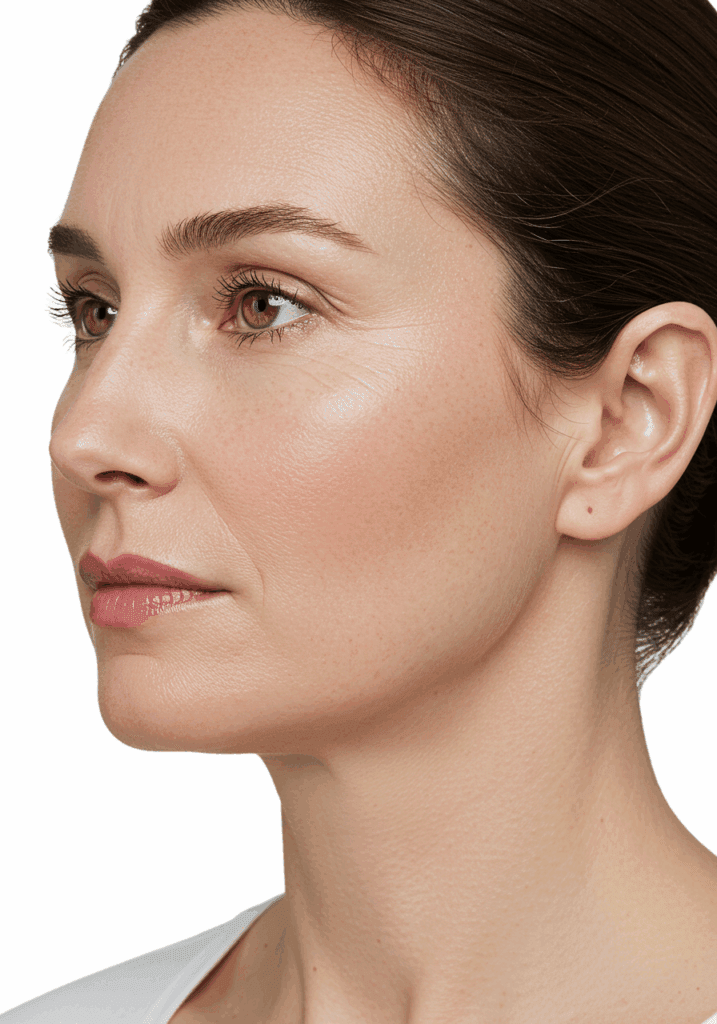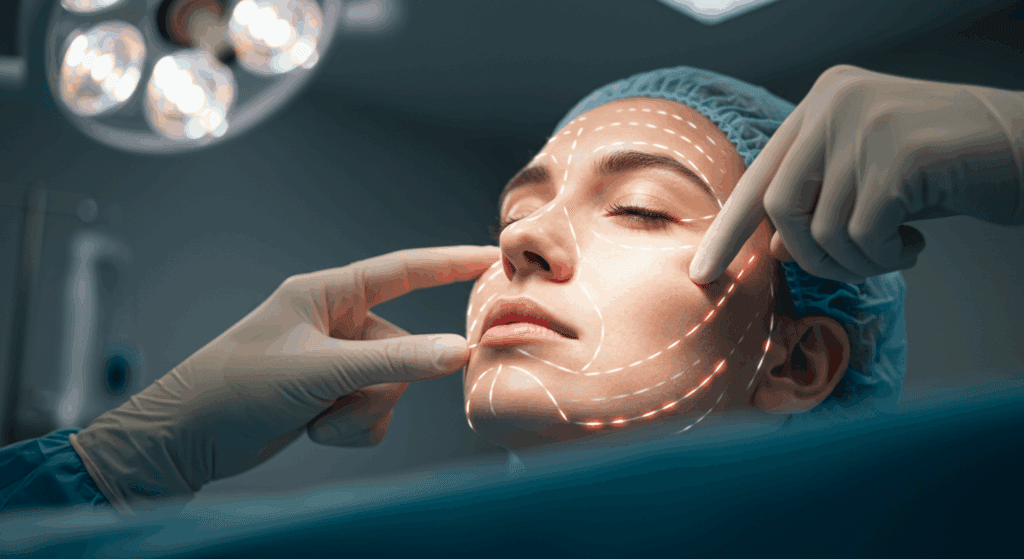When you look in the mirror, does the person you see reflect the energy and vitality you feel inside? For many, the subtle but relentless effects of time and gravity create a disconnect—a tired or stern appearance that doesn’t align with their inner self. This concern often leads individuals to explore facial rejuvenation, with a single, paramount goal: to look refreshed and revitalized, not “done.”
In the world of aesthetic surgery, the difference between a natural, lasting result and a temporary, “windswept” look lies hidden beneath the surface. The secret isn’t in pulling the skin tighter; it’s in restoring the foundational architecture of the face.
This guide will take you on that journey beneath the skin to explore the single most important structure in modern facial surgery: the SMAS, or Superficial Musculoaponeurotic System. Understanding this layer is the key to understanding how a truly masterful facelift in Antalya can turn back the clock with grace and authenticity.
Table of Contents
Chapter 1: The Flaw in the Traditional Approach: Why Skin-Only Facelifts Fail
For decades, the earliest facelifts focused on the most obvious sign of aging: loose skin. The logic seemed simple—trim the excess skin and suture it back into place. While this “skin-only” lift could produce an immediate tightening effect, its results were notoriously short-lived and often unnatural.
Why? Because it completely ignored the root cause of facial aging.
Imagine a beautiful silk sheet draped over a sagging mattress. You can pull the sheet taut, but the underlying lack of support remains. The sheet will quickly loosen, and the sagging shape will reappear. A skin-only facelift does precisely this. It places all the tension on the skin, an elastic tissue never designed to be a primary support structure. This leads to several predictable problems:
- Rapid Relapse: The skin stretches back, and the jowls and sagging return, often within a few years.
- A Tight, “Pulled” Look: Tension on the skin can distort facial features, pulling at the corners of the mouth and eyes, creating the tell-tale “operated-on” appearance.
- Visible Scarring: Tension on the incision lines can lead to wider, more noticeable scars.
Modern, expert facial surgeons recognize that the skin is merely the covering. The real work of rejuvenation must happen at a deeper level.
Chapter 2: The SMAS – Your Face’s Architectural Support System
The SMAS is a fibrous network of tissue that lies deep to the skin and subcutaneous fat. It acts like a sophisticated internal scaffolding, enveloping and connecting the muscles of facial expression. Think of it as the foundational layer that gives your face its contour and shape.
- In Youth: The SMAS is firm, elastic, and positioned high on the facial skeleton. It holds the overlying fat pads (like those in your cheeks) in a lifted, youthful position, resulting in a sharp jawline, smooth neck, and full, heart-shaped face.
- With Age: Gravity, genetics, and time cause the SMAS to weaken, stretch, and descend. As this internal scaffolding sags, it drags everything with it—the fat, the muscles, and the skin.
This descent of the SMAS is the direct cause of the most prominent signs of facial aging:
- Jowls: The drooping of tissue that obscures the clean line of the jaw.
- Nasolabial Folds: The deep creases that form between the nose and the corners of the mouth.
- Marionette Lines: The lines that run down from the corners of the mouth, creating a sad or angry look.
- Mid-face Hollowness: As cheek fat descends, the area under the eyes can appear hollowed.
- Neck Laxity: The development of loose skin and vertical bands in the neck.
Therefore, a successful facelift must reposition this foundational layer. By lifting and securing the SMAS, a surgeon can restore the face’s youthful contours from the inside out. The skin can then be re-draped gently, with absolutely no tension, allowing for a truly natural and long-lasting result.
Chapter 3: The Surgeon’s Toolkit: Not All SMAS Lifts Are Created Equal
While the principle of addressing the SMAS is universal in modern facelifts, the true artistry lies in how a surgeon manipulates this layer. An expert surgeon must master a spectrum of techniques to tailor the procedure to each patient’s unique anatomy, degree of aging, and desired outcome.
Here are the four principal techniques for performing a world-class facelift in Antalya.

1. SMAS Plication: The “Folding and Anchoring” Technique
In a SMAS plication, the surgeon uses strong, permanent sutures to fold the SMAS layer onto itself and anchor it to a more stable, higher position.
- Analogy: Imagine the inner lining of a tailored coat has become loose. A tailor wouldn’t just stretch the outer wool; they would open the coat and create a neat, internal fold in the lining, restoring the garment’s original structure and shape.
- Ideal For: Patients with mild to moderate facial sagging who need a significant, reliable lift but may not require the removal of tissue. It is a highly effective and slightly less extensive procedure.
2. SMASectomy: The “Trimming and Tightening” Technique
With this technique, the surgeon precisely removes a strip of the stretched-out SMAS tissue. The remaining edges are then lifted and sutured together, creating a powerful tightening effect.
- Analogy: This is akin to removing a worn-out section from a leather belt and stitching it back together to make it shorter, stronger, and more functional than before.
- Ideal For: Patients with more significant jowling and neck laxity. Removing a segment of the descended SMAS provides a very robust, secure, and well-defined lift, particularly along the jawline.
3. SMAS Flap: The “Lift and Reposition” Technique
This classic and powerful technique involves creating a “flap” of the SMAS layer. The surgeon carefully elevates this flap, detaches it from some of its deeper anchoring points, lifts it superiorly and posteriorly to its youthful position, and then secures it firmly.
- Ideal For: This technique offers immense versatility, allowing for a multi-vector lift that can address both sagging jowls and descended cheek volume simultaneously.

4. Deep Plane Facelift: The “Composite Gold Standard”
The deep plane facelift is the most anatomically advanced and sophisticated approach to facial rejuvenation available today.
In this procedure, the skin and SMAS are not separated. Instead, the surgeon enters a natural tissue plane located underneath the SMAS layer. By working in this “deep plane,” key retaining ligaments that tether the facial tissues and pull them down with age can be released. The entire unit of skin, fat, and SMAS is then elevated and repositioned as a single, composite block.
- The Gold Standard Advantage: The lift is performed at the deepest structural level, meaning there is zero tension on the skin itself. This completely eliminates the risk of a “pulled” look and ensures the most natural, harmonious, and “un-operated-on” result possible. It also promotes a smoother, faster recovery as the blood supply to the skin is better preserved.
Chapter 4: The Dr. Berat Çiğdem Philosophy: Your Face is Not a Formula
So, which technique is the best? The only correct answer is: the one that is best for you.
A “one-size-fits-all” approach is the enemy of exceptional results in facial surgery. My philosophy, honed over a decade of experience and through masterclasses with world-renowned surgeons, is rooted in bespoke customization.
During your private consultation, I conduct a meticulous analysis of your unique facial anatomy, skin quality, bone structure, and specific patterns of aging. Only then will I recommend the technique—or, often, a combination of techniques—that will achieve your goals in the most effective and elegant way. My commitment is not to a single procedure, but to a single outcome: a refreshed, natural result that honors your unique identity.
This dedication to personalized excellence is supported by a foundation of trust and safety. With credentials from both the Turkish Board and the prestigious International Society of Aesthetic Plastic Surgery (ISAPS), and by performing all procedures in a fully accredited, state-of-the-art private hospital, I ensure your journey is as safe and comfortable as it is transformative.
Key Takeaways for Your Journey
- Look Deeper than Skin: True facial rejuvenation comes from repositioning the underlying SMAS layer, not from pulling on the skin.
- Technique Matters: From Plication to the Gold Standard Deep Plane, different SMAS techniques address different degrees and types of aging.
- Customization is Crucial: There is no “best” facelift, only the best facelift for you. A surgeon’s expertise is measured by their ability to select and execute the perfect technique for your anatomy.
- Safety and Expertise are Paramount: Your results and well-being depend on the surgeon’s qualifications, experience, and commitment to performing surgery in a safe, accredited environment.
Questions to Ask Your Surgeon
When considering a facelift, you are not just choosing a procedure; you are choosing a surgeon. To ensure you are in the best hands, consider asking:
- Do you perform skin-only facelifts, or do you always address the SMAS?
- Which SMAS techniques are you proficient in (Plication, SMASectomy, Deep Plane)?
- Based on my anatomy, which technique would you recommend for me and why?
- Can you show me before-and-after photos of patients who have similar aging patterns to mine?
Your journey to rejuvenation is a significant one. By arming yourself with knowledge, you can move forward with confidence, ensuring the face you present to the world is a true and beautiful reflection of the person you are.
Frequently Asked Questions (FAQ) About the SMAS Facelift
1. How long do the results of a SMAS facelift last?
A SMAS facelift provides a powerful and long-lasting result because it corrects the underlying structure of the face, not just the skin. While the procedure turns back the clock significantly, it doesn’t stop the natural aging process. Most patients can expect to enjoy their rejuvenated appearance for 10 to 15 years, significantly longer than the 2-5 years one might get from a skin-only lift. Factors like genetics, lifestyle, and sun protection will influence the longevity of your results. The goal is to age gracefully from your new, refreshed starting point.
2. Will I look “pulled” or unnatural after a SMAS facelift?
This is the most common and valid fear, and the primary reason why the SMAS technique is so important. The “pulled” or “windswept” look is a direct result of placing tension on the skin. A modern SMAS facelift avoids this entirely. The lift and repositioning are done on the deep SMAS layer. The skin is then gently and artfully re-draped over this newly restored foundation with no tension. In a deep plane facelift, this principle is taken even further, resulting in the most natural and “un-operated-on” look possible.
3. Is a SMAS facelift painful, and what is the recovery like?
You can expect some discomfort, tightness, and swelling after any surgical procedure, but significant pain is uncommon and well-managed. Our priority is your comfort. In the crucial first 24 hours, you will be cared for by a private nurse in the hospital, and your discomfort will be managed with advanced tools like PCA (Patient-Controlled Analgesia), which allows you to administer pain relief as you need it.
Most patients feel comfortable enough to return to light daily activities within a few days. Swelling and bruising typically peak around day 3-4 and substantially subside over the next two weeks. Most patients feel “restaurant ready” and socially confident after about 2 to 3 weeks.
4. Which SMAS technique—Plication, SMASectomy, or Deep Plane—is the best?
There is no single “best” technique for everyone. The best technique is the one that is perfectly matched to your unique facial anatomy, skin quality, and aging pattern. A surgeon who only offers one type of facelift will apply that same tool to every patient. An expert in facial rejuvenation, however, has mastered the full spectrum of techniques. During your private consultation, Dr. Çiğdem will perform a detailed analysis to determine which approach will deliver the most beautiful and natural result for you.
5. Why should I travel to Antalya for my facelift?
Traveling to Antalya for your facelift allows you to access a world-class surgeon with extensive international qualifications (like ISAPS membership) in a state-of-the-art private hospital setting. Furthermore, our all-inclusive packages are designed specifically for our UK patients to create a seamless and stress-free experience. From VIP airport transfers and hotel arrangements to your hospital stay and all post-operative check-ups, every detail is managed for you. This allows you to focus solely on your recovery and enjoy the transformative results of your procedure.
6. Am I a good candidate for a SMAS facelift?
An ideal candidate is typically a man or woman between the ages of 40 and 70 who is in good overall health and a non-smoker. You may be a good candidate if you are bothered by:
- Moderate to severe sagging in the mid-face and cheeks
- The formation of jowls along the jawline
- Deep nasolabial folds and marionette lines
- Neck laxity, including loose skin or vertical bands
The most important qualification is having realistic expectations and a desire for natural-looking rejuvenation. The best way to know for sure is to schedule a comprehensive one-on-one consultation.

